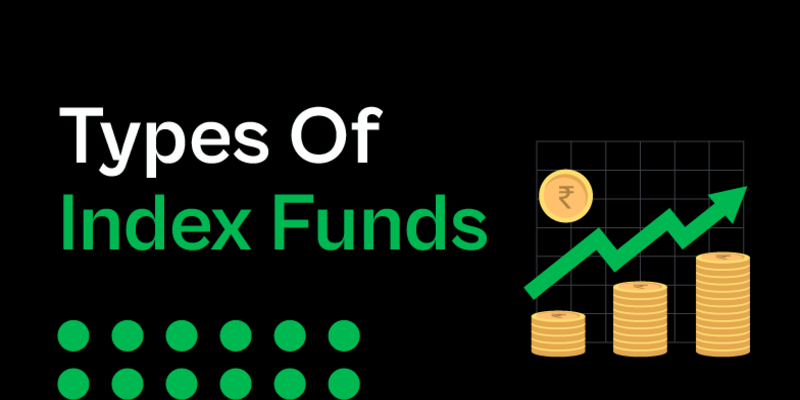Putting money into the stock market for the first time is daunting. Yet, to get where you want to be financially, you need a long-term investing strategy. Investing in the stock market using low-cost index funds is simple and inexpensive. Index funds are a passive alternative to actively managed mutual funds since they track a market index such as the S&P 500. Thus, they save investors money compared to actively managed funds. Investing in low-cost index funds is a straightforward approach to creating a diversified portfolio tailored to one's objectives and risk tolerance. Investing across many asset classes, such as stocks, bonds, and real estate, may spread risk and increase returns.
How Do Index Funds Work?
While investing, an index fund aims to produce results similar to those of a predetermined stock market index. The Standard & Poor's 500 Index, which consists of 500 large-cap U.S. firms, is followed by the vast majority of index funds. Investors also keep tabs on the Nasdaq Composite, the Russell 2000, and the Dow Jones Industrial Average. Active stock selection techniques are not used by index-tracking mutual funds. Instead, they attempt to mimic the underlying index's behavior. Index funds are popular among investors because their passive investment strategy produces cheap management fees and yearly expenditures.
The Advantages Of Low-Cost Index Funds
Reduced Costs:
Index funds have lower management costs than actively managed funds since they need less attention from the fund's manager. As a result, you'll keep more of your investment returns rather than giving them to the fund management.
Diversification:
Since best low cost index funds are structured to mirror a particular index, investors are automatically diversified across a wide range of businesses and industries. Because you will have less of your portfolio riding on the success of a single firm or industry, it will be more secure.
Transparency:
Index fund investors are obligated to reveal their portfolios to other market participants. This openness is essential for investors to analyze the pros and downsides of a venture.
Very Easy To Understand:
- Index funds may be held in a retirement or brokerage account and can be bought and sold quickly. This makes them a solid option for traders of all experience levels.
- Building a Robust Investing Portfolio with Low-Cost Index Funds
- Before making any financial commitments, you should carefully consider your goals.
- Before investing in low cost index funds fidelity, you should determine your financial goals, time horizon, and risk tolerance. This knowledge might help you best distribute your portfolio's resources.
Choices You Make About Your Investments

How much of your wealth is held in stocks, bonds, and other investments constitutes your asset allocation. While creating an asset allocation strategy, remember to include your investment objectives and risk tolerance. For instance, if you have a longer investment horizon and are comfortable with greater levels of risk, you may allocate a higher portion of your portfolio to stocks. A higher bond allocation may be appropriate if your investment horizon is shorter and your risk tolerance is lower.
Invest In Low-Cost Index Funds.
Selecting low-cost index funds that track the correct indexes is the next step after determining your asset allocation. One way to get exposure to the U.S. stock market is to buy an index fund that tracks the S&P 500. One way to get exposure to international stocks is via an index fund that tracks the MSCI EAFE index.
Rebalance Your Investment Holdings:
Over time, if some of the assets in your portfolio perform better than others, you run the risk of having an unbalanced portfolio. If your portfolio's asset allocation has shifted due to market fluctuations, you may need to sell off high-performing assets and replace them with low-performing ones. This strategy may help you control investment losses and maintain long-term stability.
Observe Your Investments:
Your portfolio should be reviewed regularly to ensure it matches your investment goals and comfort level with risk. Adapt your investment strategy as needed to keep your portfolio diversified and balanced.
Portfolio Example Consisting Only Of Low-Cost Index Funds

Here's how to build a diverse portfolio using cheap index funds:
- To get 20% exposure to overseas equities, put 40% into the Vanguard 500 Index Fund, which is made up mostly of firms traded on the New York Stock Exchange (VFINX) (VGTSX)
- 20% of bond holdings in the Vanguard Total Bond Market Index Fund (VBMFX)
- Investment Real Estate Fund (10%): Vanguard (VGSLX)
- Ten percent invested in Vanguard's EM Stock Index Fund (VEIEX)
- You may invest in a wide variety of markets and sectors with the help of this portfolio, from the domestic to the international and from bonds to real estate to emerging markets. You may save money and improve your returns by purchasing low-cost index funds.
Conclusion
Low-cost index funds are an excellent option for those who want to enter the stock market with little effort and expense. They have many benefits, including low entry barriers, instant diversification, transparency, and consistent yields. Investors may build a diversified portfolio that fits their goals and risk tolerance by choosing low-cost index funds that track various indexes. Maintaining a diversified and well-balanced portfolio requires regular monitoring and, if required, rebalancing your assets.



